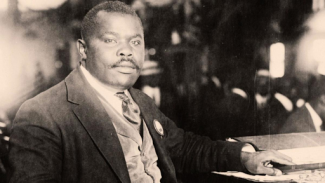
In 1920, Marcus Garvey made a bold prediction: "Look to Africa, when a black king shall be crowned, for the day of deliverance is at hand.” Ten years later, the prophecy came true, or so he thought.
In 1930, Ras Tafari Makonnen was crowned Emperor Haile Selassie of Ethiopia, a name meaning “Power of the Holy Trinity.” Back in Jamaica, a new spiritual movement rooted in Garvey’s teachings was forming. The Rastafari believed Selassie was the living fulfillment of Garvey’s prophecy, a Black Messiah sent to redeem the African diaspora.
Throughout the 1930s, the Rastafari movement spread across Jamaica — but Garvey rejected it. He denounced Selassie as a hypocrite for allowing slavery to persist in Ethiopia, and a coward for fleeing when Italy invaded in 1935.
Selassie himself never embraced Rastafarianism or claimed divinity. He quietly distanced himself from the movement even as it continued to grow, evolving far beyond the idea of a single Black Messiah.
Garvey’s words and Selassie’s reign proved that liberation can’t be contained to one man or one moment. It’s a living movement — built on faith, unity, and action — and it’s ours to carry forward together.